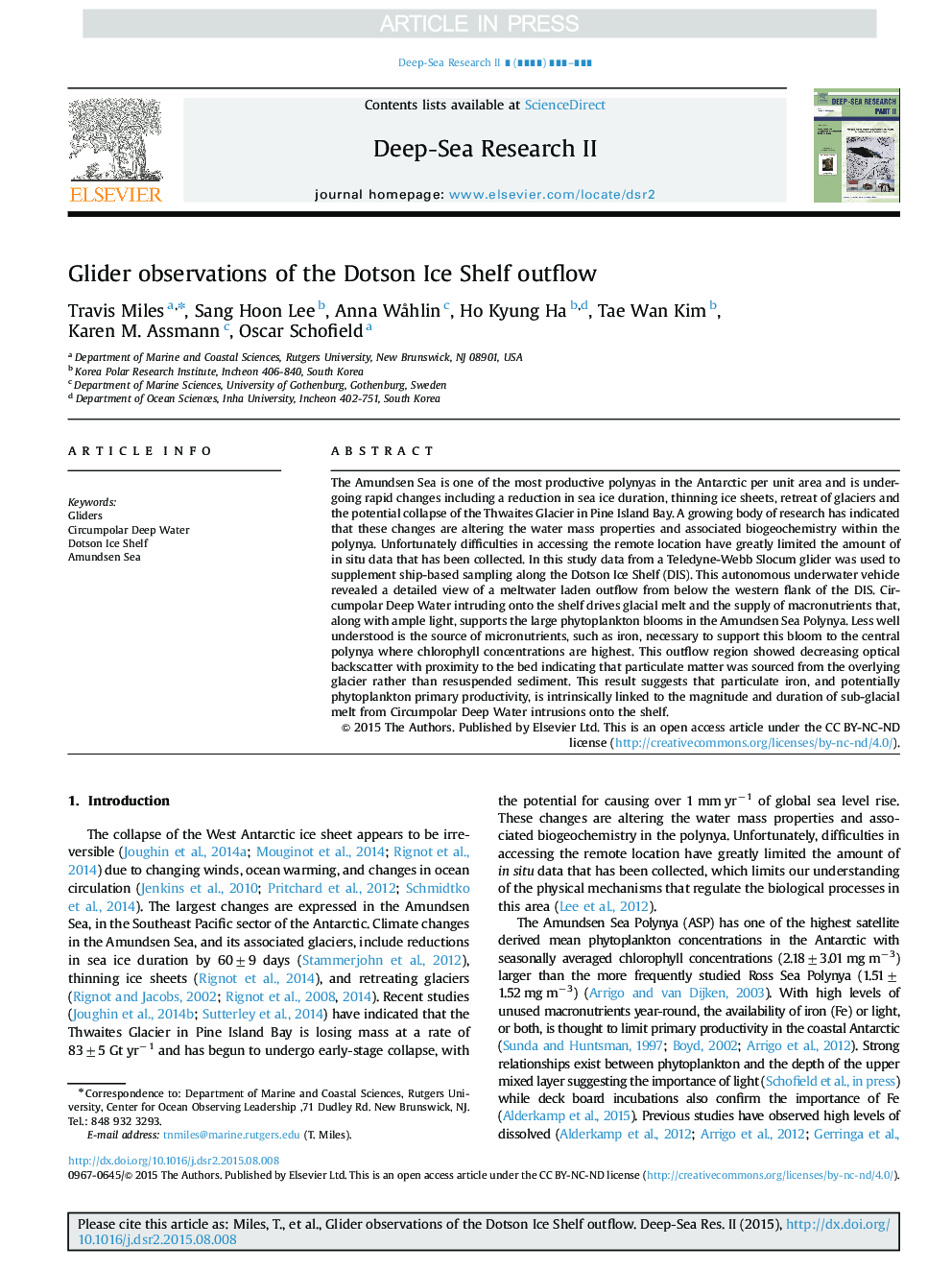| Article ID | Journal | Published Year | Pages | File Type |
|---|---|---|---|---|
| 6383989 | Deep Sea Research Part II: Topical Studies in Oceanography | 2016 | 14 Pages |
Abstract
The Amundsen Sea is one of the most productive polynyas in the Antarctic per unit area and is undergoing rapid changes including a reduction in sea ice duration, thinning ice sheets, retreat of glaciers and the potential collapse of the Thwaites Glacier in Pine Island Bay. A growing body of research has indicated that these changes are altering the water mass properties and associated biogeochemistry within the polynya. Unfortunately difficulties in accessing the remote location have greatly limited the amount of in situ data that has been collected. In this study data from a Teledyne-Webb Slocum glider was used to supplement ship-based sampling along the Dotson Ice Shelf (DIS). This autonomous underwater vehicle revealed a detailed view of a meltwater laden outflow from below the western flank of the DIS. Circumpolar Deep Water intruding onto the shelf drives glacial melt and the supply of macronutrients that, along with ample light, supports the large phytoplankton blooms in the Amundsen Sea Polynya. Less well understood is the source of micronutrients, such as iron, necessary to support this bloom to the central polynya where chlorophyll concentrations are highest. This outflow region showed decreasing optical backscatter with proximity to the bed indicating that particulate matter was sourced from the overlying glacier rather than resuspended sediment. This result suggests that particulate iron, and potentially phytoplankton primary productivity, is intrinsically linked to the magnitude and duration of sub-glacial melt from Circumpolar Deep Water intrusions onto the shelf.
Related Topics
Physical Sciences and Engineering
Earth and Planetary Sciences
Geology
Authors
Travis Miles, Sang Hoon Lee, Anna WÃ¥hlin, Ho Kyung Ha, Tae Wan Kim, Karen M. Assmann, Oscar Schofield,
